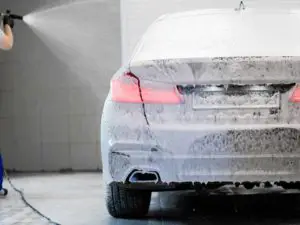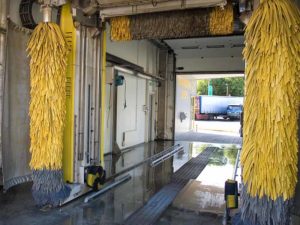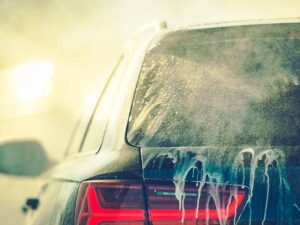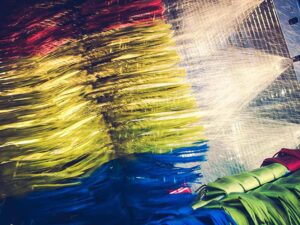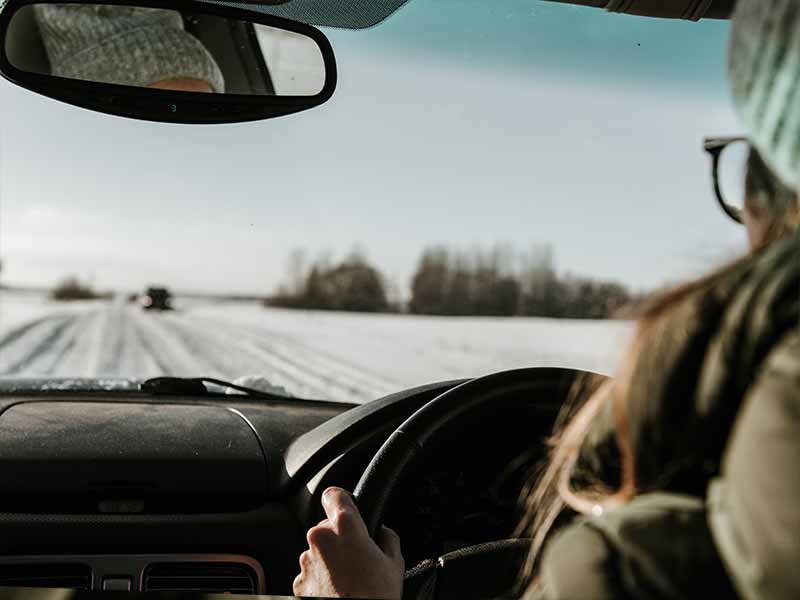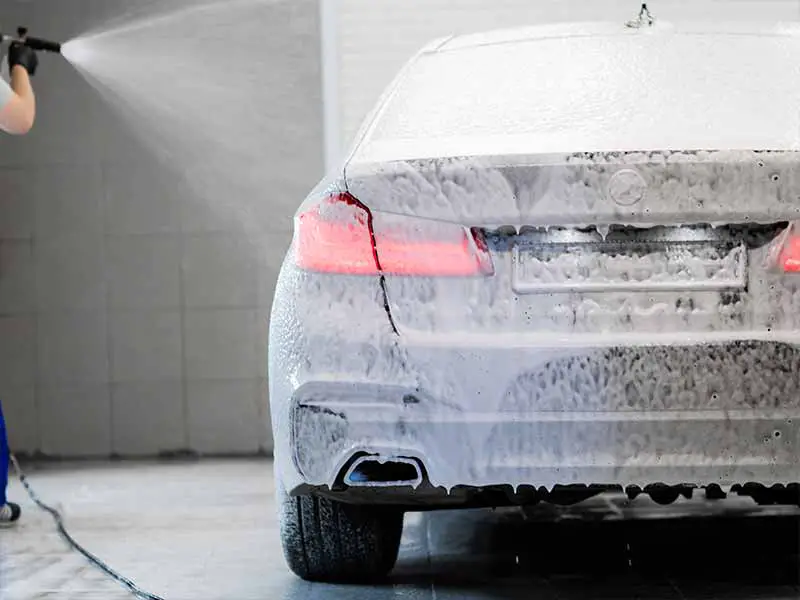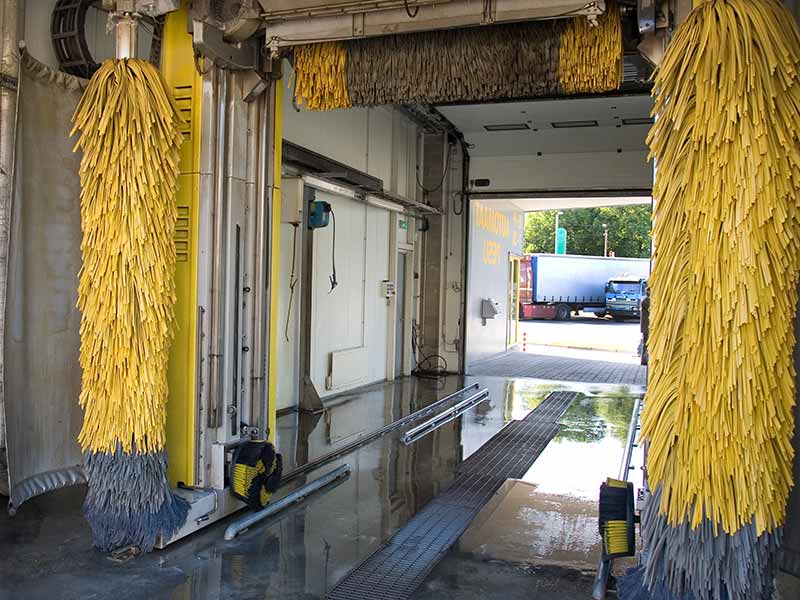Table of Contents
Water spots are an unfortunately common problem and can be extremely difficult to remove. They can easily occur from not properly drying your car or truck after washing or parking next to a sprinkler. Not all water spots are created equal. Some wipe away easily while others require more drastic measures.
How To Remove Water Spots From Car Paint
It’s important to use the least aggressive method possible to remove water spots. The following outlines the various methods of removing water spots in order of aggressiveness. The effectiveness of each depends on the minerals in the water spots and how baked in they have become.
- Wash water spots off
- Use a clay bar to remove water spots
- Use a water spot remover
- Polish water spots off
- Compound water spots off
- Wet sand water spots off
Let’s dive into the details of how to remove water spots properly, the causes, and how to prevent water spots from occurring in the future.

Water spots on my car won't come off!
Often, when you find water spots on your car or truck you realize that they won’t come off. It seems like these whitish ringed spots should just wipe away. For some people, they will. For others, you’ll have to step up to more aggressive methods to remove them.
Are water spots on cars permanent?
Water spots can be permanently etched into the clear coat of your vehicle. This isn’t always true but it certainly can be. The minerals in some tap water can bake into the finish from the heat of the sun and damage the clear coat.
Ultimately, these etched-in spots are more like scratches than a simple stuck-on deposit. This is often why they can’t simply be washed away.
Will water spots ruin car paint?
Even though water spots may have permanently etched themselves into your car or truck’s finish, it doesn’t mean they can’t be removed. But it does mean that they can’t be simply washed off.
More severe water spots will require polishing or compounding to remove. This is the same method used to remove fine swirls and scratches from your clear coat. It is the process of removing a thin layer of the clear coat from the top to leave a smooth and undamaged surface free of scratches, or in this case, etches.
It’s highly unusual for water spots to completely ruin car paint but it is technically possible. This would be especially true for a vehicle that has been compounded and polished several times and the clear coat has become very thin. An extremely thin clear coat gives you very little margin of error.

How to remove water spots
There are many different ways you can try to remove water spots, but it’s most important to remember to start with the least aggressive method of removing hard water spots and work your way up. There’s no need to remove a layer of clear coat from the top of your finish unnecessarily.
Let’s run through each of the options in detail.
Wash water spots away
If you’re lucky, you can simply wash water spots away. This can happen is the water spots haven’t completely baked into the paint or the mineral residue and contaminants the water left behind aren’t very aggressive or harsh.
You can either simply perform a typical car wash using either the 2-bucket method or the touchless method. Alternatively you try waterless wash or quick detailer and see if that’ll remove the mineral deposits.
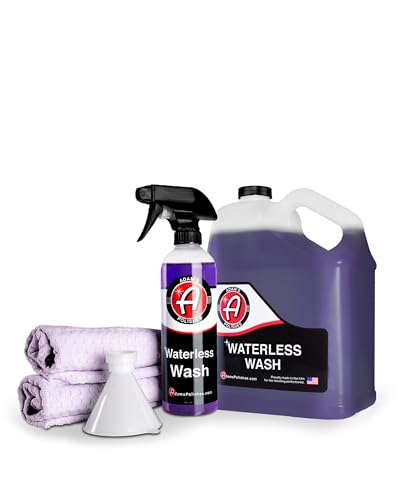
Use a clay bar
Clay bars are great for removing contaminants that are stuck to your car’s surface. If the mineral deposits on the clear coat are simply bonded to the surface, a clay bar may be able to remove them.
A clay bar glides across the surface of your finish with the help of a spray lubricant. The hard clay will pull mineral buildup and other contaminants off the paint as it glides across the finish.
If mineral deposits have etched into the paint, a clay bar won’t be able to fix the problem. But it is very effective at resolving less severe hard water spots.
How to remove water spots
with a clay bar:- Wash your car or truck thoroughly
- Spray a clay bar lubricant onto a 2 foot by 2 foot area
- Glide the clay bar across the 2 foot square section
- Buff away the clay bar lubricant with a microfiber towel
- Repeat in 2 foot square sections until the entire affected area has been cleaned
- Be sure to knead the clay bar occasionally to move the contaminants it picks up from the surface to the inside of the clay bar
If a clay bar doesn’t remove water stains and spots, you’ll need to try an alternative method.

Use an acidic water spot remover
Commercial water spot removers (such as Chemical Guys Heavy Duty Water Spot Remover) are often chemical-based removers that break down the bonds that mineral deposits have with your car’s paintwork.
Just like with a clay bar, they remove hard water stains from that are bonded to the surface of paintwork but not those that have etched into the clear coat.
Another option that you may already have at home is vinegar. White vinegar is a mildly acidic liquid that you can mix with distilled water in a spray bottle and apply to the spots and water stains on your finish.
Distilled water is free of any minerals or contaminants that could make the problem worse. Combined with vinegar, this spray will work at breaking down the bonds the existing minerals have with your finish and allow them to be wiped away with a clean towel.
It’s important not to simply use vinegar and nothing else to remove hard water stains. You will need to use something to lubricate the surface to protect the finish as you wipe away the mineral stains.
It’s best to use a commercial water spot remover since it will contain lubricants to help protect your clear coat from fine swirls and scratches.
Commercial water spot removers are recommended over vinegar. If you use a commercial water spot remover, follow the instructions on the bottle.
How to remove water spots
with vinegar:- Fill a spray bottle with distilled white vinegar
- Fill another spray bottle with 50% distilled water and 50% car wash soap
- Wash the car thoroughly to remove dirt and grime
- Lightly spray a 2 foot square area with the 50/50 mix of distilled water and car wash soap
- Next, spray the area with the distilled vinegar
- Wipe with a microfiber cloth to remove hard water spots
- Buff away the distilled water, car wash soap, and vinegar solution
- Repeat in the same area if necessary
- Once you’re satisfied with the results, continue in another 2 foot square area
- Repeat until the entire vehicle has been cleaned
If water spots can’t be removed with vinegar or commercial acidic water spot removers you’ll need to step up to the next aggressive solution.

Use a polish
If hard water stains haven’t been able to be removed by washing, claying, or using acidic removers, the contaminants have etched into your clear coat and will need to be polished out. Polishes are very mild abrasives that will remove a very thin layer from the surface of your vehicle’s clear coat. This is a very safe method of removing these light etchings as well as fine swirls and scratches. While this can be done by hand on small areas, it’s recommended to use a dual action polisher for anything larger than a 2 foot square area. This isn’t just because polishing by hand will become extremely tiring, but polishing by hand can be difficult to keep consistent and achieve good results. Dual action polishers are extremely gentle. They’re not like the orbital buffers from years ago that could easily damage paint. It would take quite a bit of negligence to damage car paint with a dual action polisher.How to polish out water spot etchings:
- Apply a mild polish (like Chemical Guys VSS or Meguiar’s Water Spot Remover) to your polishing pad.
- Work the polish into the polishing pad with your finger.
- Dab your polishing pad in several spots across a 2 foot square area.
- Begin polishing the area and continue until you’re satisfied with the results
- Buff away the polishing compound with a microfiber cloth
- Repeat in another 2 foot square area
- Continue until the entire vehicle has all of the stains and spots removed
Use a rubbing compound
A rubbing compound is essentially just a coarser grit polish. It will more aggressively wear away a thin layer from the surface of your clear coat. You’ll use it just like you would a polish. Meguiar’s Ultimate Compound is a great choice. Alternatively you can purchase something like Chemical Guys V Line Polish And Compound Kit. It contains 4 different levels of grit coarseness. You can start mild and work your way up to a compound that is effective. The only difference between using rubbing compound and polish is you’ll need to follow up with a polish. Rubbing compound will leave a slightly more dull and hazing finish due to the coarser grit. A polish will smooth the surface and bring back the shine. A dual action polisher is almost mandatory at this point. Trying to use rubbing compound and polish by hand will be a monumental task unless you’re only dealing with a very small area.
How to remove water spots
from car windowsWe have a couple of articles (1, 2) that specifically address removing water spots from car windows and windshields. We aren’t going to cover those details here so be sure and check those articles out if you’re dealing with water spot removal on glass surfaces.
Why do water spots form?
Water spots are usually the result of minerals in water. These minerals are left on the finish after the water has evaporated away. The minerals and other contaminants in the water can’t evaporate so the get left behind.
Water with high concentrations of minerals and contaminants is known as hard water. Obviously, water with few minerals and contaminants is referred to as soft water.
Common troublesome minerals in hard water are high amounts of calcium and magnesium.
Depending on the amount and what these minerals and contaminants are, the damage they can cause can be negligible or significant.
Not all water will contain harsh minerals and contaminants. Unfiltered well water tends to be hard. Some cities and towns will also have very hard water. Other places will fairly soft water.
TDS – Total Dissolved Solids
There are several reasons you can end up with water spots on your car’s paint. Probably the most likely reason is that the water you used to wash your car is hard – meaning that it has a high amount of minerals dissolved in the water.
This is more appropriately referred to as total dissolved solids or TDS for short.
An aggravating factor for dealing with hard water and the resulting hard water spots is washing your car in direct sunlight. Sunlight will cause the water on your car to dry quickly. Evaporation will cause the water to leave behind the dissolved solids which are typically minerals.
You can have hard water with high TDS and if you wash and dry it quickly with a good microfiber towels or air dryer you can avoid water spots. If the sun dries it out before you get a chance to handle it yourself you’ll end up with spots.
Water spots on cars after washing
Hard water spots often develop after washing your car or truck. The reason is not following proper washing techniques.
You should never wash your vehicle in direct sunlight. This will cause any water on your finish to evaporate quickly and not give you enough time to dry the finish properly.
You should never let your car or truck air dry. It’s important to dry your vehicle yourself to prevent water stains or mineral deposits from occurring. Drying by hand will remove the water along with the potentially damaging minerals and contaminants with it.
Be sure to dry your car completely to eliminate the chance of water from cracks and crevices running off later as you begin to drive and leaving water stains that might go unnoticed until it’s too late to prevent serious damage.
Sprinkler water spots on cars
Another frustrating cause of hard water spots come from sprinklers. Sprinklers used by you or your neighbor can be more easily controlled and accounted for. Sprinklers around public parking locations that you may not even be aware of can be particularly frustrating.
Surprise sprays from sprinklers can leave severe mineral deposits and water stains on your finish. Water used for watering grass and plants is often hard water since it is less likely to have been treated in some way to soften it.
Obviously the big problem with water spots caused by sprinklers is the fact that you often don’t know about them until it’s too late.
Try to be as vigilant as possible about where you park to eliminate the chance of getting sprayed by sprinklers.
Water spots from rain on car
Yes, even rain can cause water spots on your vehicle’s finish. Many factors come into play with the amount and type of minerals and contaminants in rainwater.
Rain comes from evaporated water from lakes, ponds, streams, rivers, and the ocean. Most of the heavy minerals won’t evaporate along with the water, but some will. Depending on the bodies of waters the rainstorms developed from can affect the amount of minerals in the rainwater.
Industrial fallout is another source of rainwater contaminants. Pollution in the air will get pulled out by clouds and falling rain. These pollutants can end up being very damaging or they can be insignificant. This has a lot to do with the types of pollution in your area.
Keeping your car garaged or sheltered from rain as much as possible is the best solution. This isn’t practical for everyone, but fortunately, rain tends to be less of a problem.

How to prevent hard water spots on car paint & windows
There are a few methods to be aware of to keep water spots from damaging your finish. Let’s cover them:
Thoroughly dry your car or truck
Any time your car or truck gets wet you run the risk of the water evaporating and leaving water spots behind.
The most effective method of preventing water spots is to always dry your vehicle after washing, a rain, or if sprinklers soak it.
Using a microfiber drying towel or an air dryer is a safe way of drying your finish and minimizing the chance of creating swirls and scratches in the clear coat.
Air dryers are the safest since you won’t be physically touching the finish, but microfiber towels are a great alternative due to the protective nap and extreme absorbency they provide.
Water softener
If you live in an area that has unusually hard water, you may want to invest in a water softener to remove minerals and contaminants from the water you use for washing your car or truck.
A good quality water softener will lower the TDS and prevent water spots from forming even if you don’t get a chance to dry your vehicle properly before the water beads evaporate.
Car wax
Car wax does a great job of protecting your vehicle’s paintwork from the contaminants that cause water spots, as well as road grime, bird droppings, and other things that can damage your finish.
Water spots can’t damage your finish when it’s protected by carnauba wax because the minerals and contaminants will not be able to physically come into contact with the paintwork and they will be easily removed because they can’t bond with the wax.
Pure carnauba wax is the original protectant used to coat cars and trucks, but it doesn’t last long. Carnauba wax will only last a month at best. While it looks great and is a good protectant, it requires a lot of reapplication to maintain that protection.
Paint Sealant
Paint sealants are excellent at protecting paint. They are very similar to carnauba wax but they last much longer. Instead of only a few weeks, paint sealants can last for many months, some lasting well over a year.
Paint sealants prevent water spots as well as car wax, but because they last so much longer they will much more likely be working when you need them.
Ceramic Coating
Ceramic coatings are essentially an advanced paint sealant. They create a hard shell coating on the surface of your clear coat. Even some of the worst performing ceramic coatings last longer than paint sealants. Some of the best ones last 5 or more years.
Ceramic coatings are extremely hydrophobic, which essentially means they shed water easily. Dirt and contaminants won’t stick to the surface.
Ceramic coatings can be applied by the average DIY detailer, but they are more involved than simply applying a carnauba wax or paint sealant.

Helpful Links
Conclusion: How To Remove Hard Water Spots
Hard water spots are an extremely frustrating problem on unprotected paint. When water evaporates it can leave behind minerals and contaminants that either stain the surface or even eat away at the clear coat of your paintwork.
You should protect your car or truck with a wax, paint sealant, or ceramic coating, to prevent water spots from occurring.
You may have luck washing water spots off with a simple garden house and some soap, but you will likely need to use something more aggressive.
Stubborn water spots might be able to be removed with a mild acid like vinegar or a commercial water spot remover.
More difficult water spots have likely etched the clear coat and will need to be polished out.

